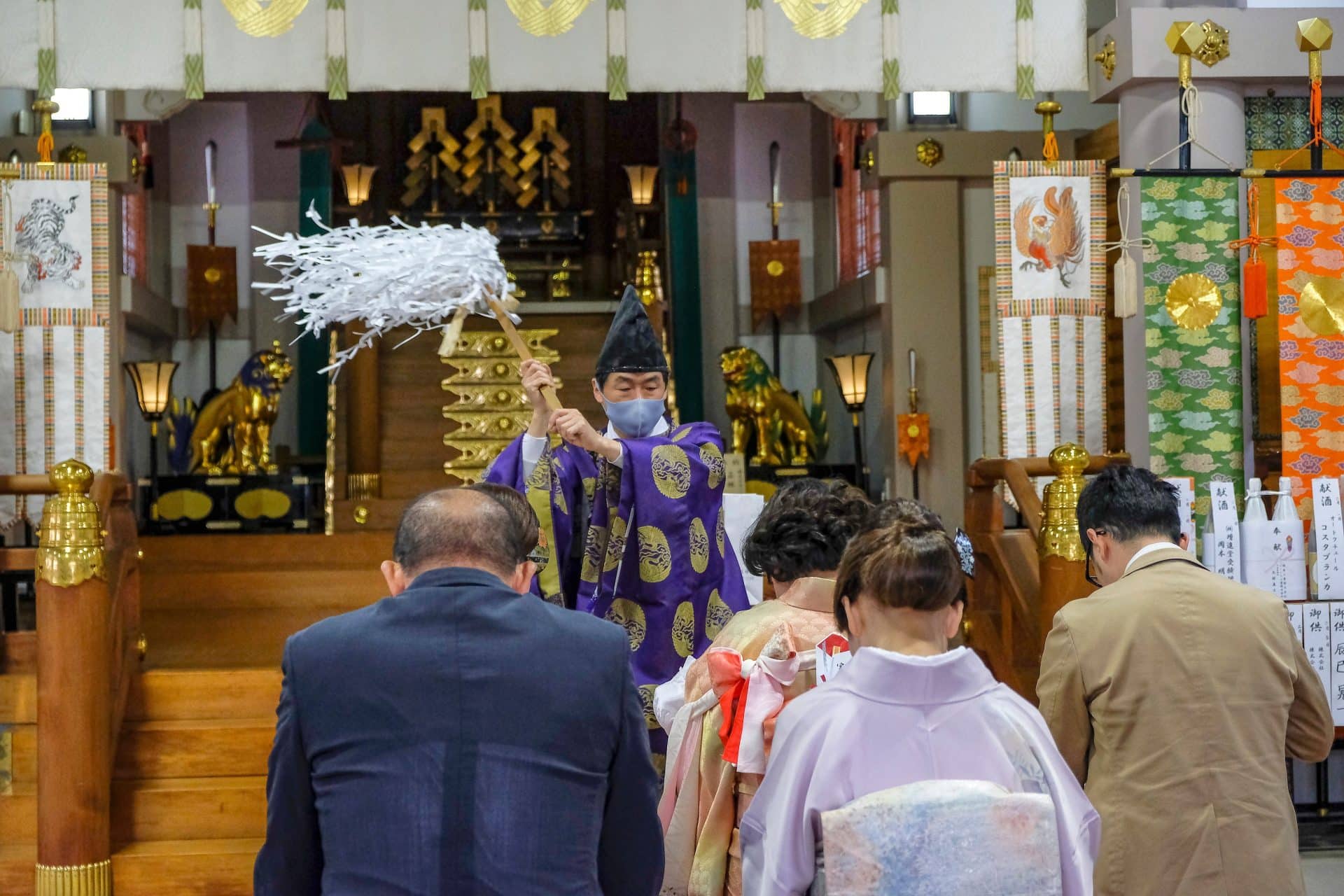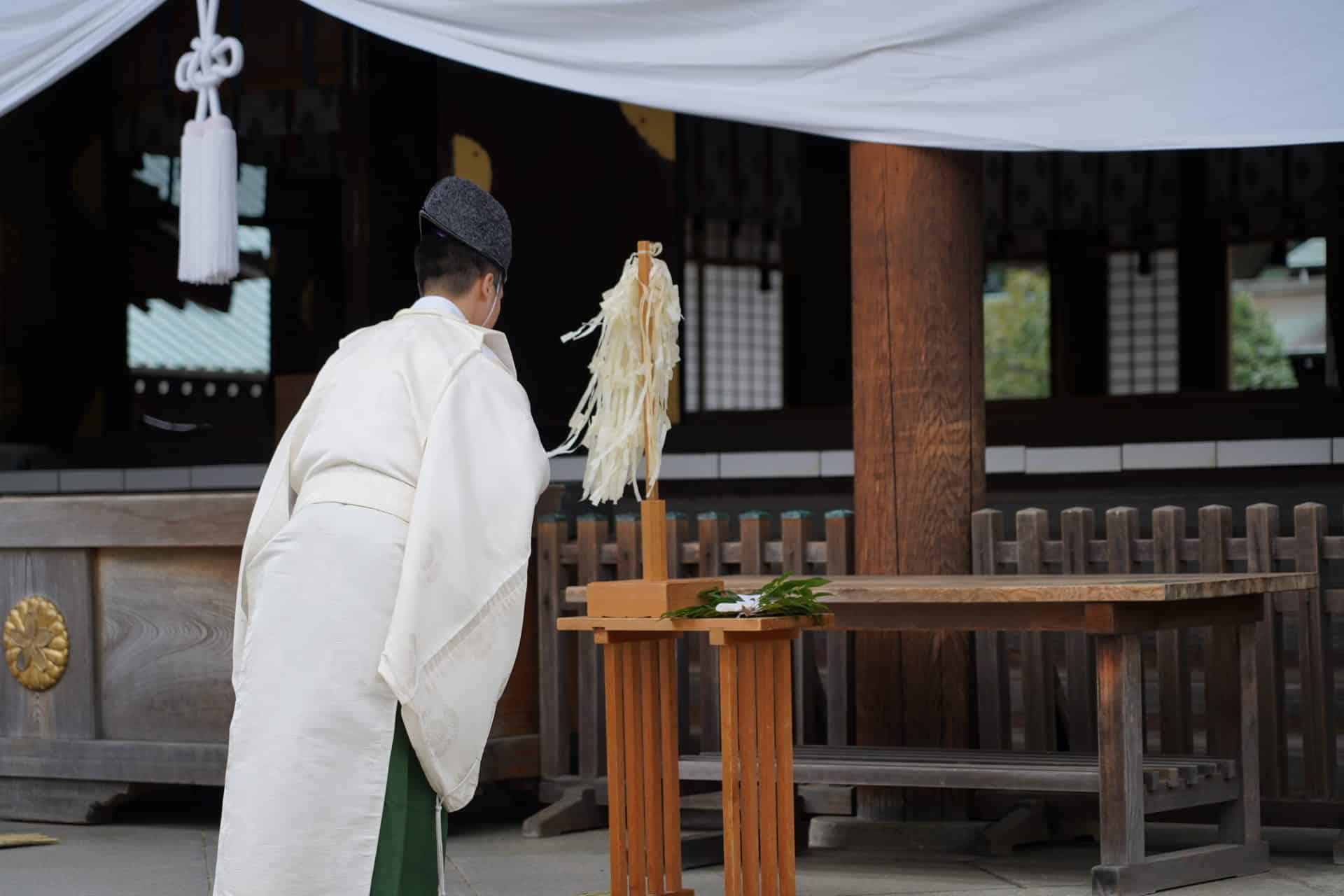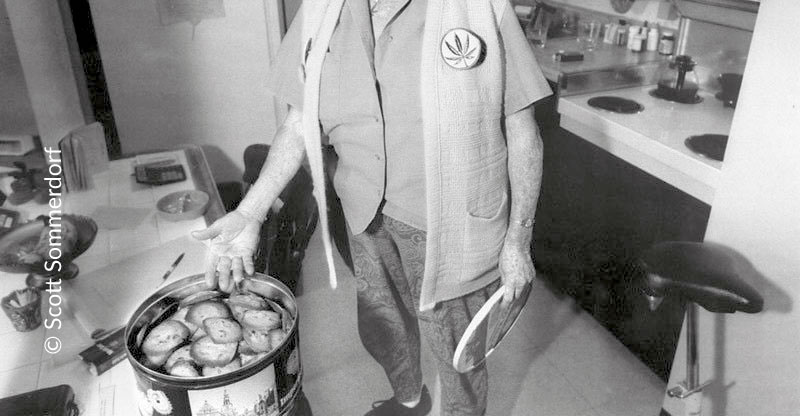The kanji, or sign, for nusa is 麻 – the same one used for hemp. The affix 大 indicates the quality of being large in size, and connotes ideas of politeness and respect for the divine. Another type is called konusa (小麻, literally ‘small nusa’).
While onusa is an object used to purify a large number of people, konusa is used by a person to purify themselves. It is a short, thin wooden skewer with hemp rope and/or small paper squares attached to it.
In this picture the Shinshoku is using an onusa (大麻) for this purification ritual. An onusa is composed of a wooden stick to which is attached (in varying amounts):
- Strips of white paper
- Strips of white paper in the shape of a lightning bolt (shide)
- Ramie fibres
- Hemp fibres
- Strips of hemp bark
The paper strips commonly used in Japan today are derived from hemp textiles used in Shinto in the past. For example, pieces of hemp would be hung in a sakaki tree to mark a sacred spot. Another onusa is made from branches of sakaki trees with shide and/or asao – hemp rope – attached.
Kirinusa
Kirinusa (切麻) is one of the tools used in Shinto purification. It is made of shredded hemp rope mixed with small paper squares. Occasionally rice and/or salt are added. This mix is itself the tool. It is sprinkled on the object to be purified. Kirinusa is believed to gather the impurities of the object or person being cleansed, and carry them away.
Haraenusa
Often a type of onusa, named haraenusa (also referred to as haraegushi or haraigushi), stands near a Shinto altar, as in this exhibition. It consists of a stick with strips of white paper (shime) and shiny hemp fibres attached to it. During a purification ritual, the priest shakes this tool over the person or object (e.g. a house or a car) to be purified. This dispels evil and welcomes a pure state. Waving it from left to right and back again, in the direction of the person or object, transfers their impurities to the haraenusa.
Moving the shime back and forth attracts the kami, who descend into it. Then it is brought into contact with the body of the person concerned. The haraenusa can thus be seen as a kind of conductor, transmitting the divine spirit to the human body. Hemp connects the divine with the earthly world for the person undergoing the ritual.











